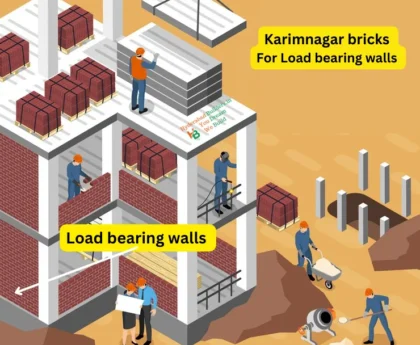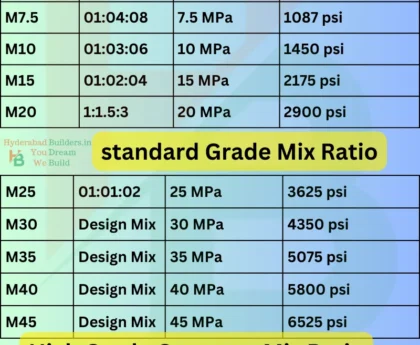Introduction
Table of Contents
Toggle- Introduction
- The Importance How To Check Brick Quality for Construction
- 1 Visual Inspection of Bricks
- 2 Dimensional Accuracy
- 3 Water Absorption Test
- 4 Compressive Strength Test
- 5 Efflorescence brick Test
- 6 Soundness or clap test and Density Tests
- 7 Frost and Abrasion Resistance
- Additional Tests and Considerations
- Conclusion
In the realm of construction, red bricks have stood the test of time as a fundamental construction building material, synonymous with strength and durability. The quality of red bricks plays a pivotal role in determining the integrity and longevity of a building. Utilizing high-quality red bricks is not just a matter of structural soundness; it’s a crucial aspect of ensuring safety and endurance in construction. Quality bricks contribute significantly to the overall stability and resilience of structures, forming the backbone of countless buildings worldwide. As we explore the nuances of brick quality, it becomes clear that the right choice in building materials can make all the difference in the lifespan and safety of construction projects. we need to ensure quality of as they are back bone to the construction and bricks price in Hyderabad, India are increasing day to day
The Importance How To Check Brick Quality for Construction
The quality of red bricks is a cornerstone in the construction industry, directly impacting the strength, safety, and longevity of buildings. High-quality bricks ensure that structures can withstand various environmental stresses, from weather extremes to daily wear and tear. Conversely, substandard bricks can lead to severe consequences, including structural failures, increased maintenance costs, and potential safety hazards. The use of high-quality red bricks is essential in constructing long-lasting buildings that offer not only strength but also security and peace of mind. In an industry where safety and durability are paramount, the choice of brick quality is not just a technical decision but a commitment to excellence in construction.
1 Visual Inspection of Bricks
The first step in assessing the quality of red bricks is a thorough visual inspection. High-quality bricks should exhibit a uniform and consistent color, indicating proper firing during manufacturing. The texture should be homogeneous, with a smooth yet grip-friendly surface. Cracks, chips, or other surface irregularities are telltale signs of inferior quality. Additionally, the shape of the brick should be uniform, with sharp and straight edges, ensuring ease of use and uniformity in construction. This visual inspection, though seemingly simple, is a crucial step in ensuring the surface quality and overall integrity of the bricks used in construction projects.
2 Dimensional Accuracy
Dimensional accuracy is critical in ensuring the uniformity and stability of brick masonry. Standard red brick dimensions typically measure about 190mm in length, 90mm in width, and 90mm in height, although these can vary based on regional standards. Consistent dimensions are vital for achieving strong and even bonding in masonry, as well as for aesthetic alignment. Bricks that deviate significantly from these dimensions can lead to irregularities in construction, affecting both the appearance and structural integrity of the building. Accurate sizing is, therefore, a non-negotiable aspect of brick quality, playing a critical role in the efficacy and efficiency of construction.
3 Water Absorption Test
The water absorption test is a key indicator of brick quality, reflecting its porosity and density. To conduct this test, weigh a dry brick (W1), then immerse it in water for 24 hours. Afterward, weigh the wet brick (W2). High-quality bricks should absorb less than 20% of their weight in water. The formula for calculating water absorption is (W2 – W1) ÷ W1 × 100. Bricks with high water absorption rates are more prone to moisture-related damage and weakening, affecting the durability of the structure. Consequently, understanding a brick’s resistance to moisture is essential in selecting materials that ensure longevity and resilience in construction.
4 Compressive Strength Test
Compressive strength is a critical measure of a brick’s ability to withstand loads, crucial in construction. This test involves applying pressure to a brick until it fails or breaks, with the strength measured in megapascals (MPa). The required compressive strength varies based on the application but generally falls within a specified range set by construction standards. High compressive strength indicates a brick’s capability to bear weight and endure stress, making it suitable for load-bearing walls and other structural elements. Testing for compressive strength ensures that the bricks used in construction can support the intended loads, contributing significantly to the overall safety and stability of the structure.
5 Efflorescence brick Test
The efflorescence test is crucial for assessing the quality of red bricks. This test helps identify the presence of soluble salts which can cause efflorescence – a white, powdery deposit on the brick surface. To perform the test, place a brick in water so that it is partially submerged, and leave it for 24 hours. The water evaporates, leaving any soluble salts behind. Examine the brick for white stains. The presence of significant efflorescence, indicated by a heavy salt deposit, compromises brick quality, as it can lead to deterioration and aesthetic issues. Therefore, conducting the “brick efflorescence test” is essential in ensuring the longevity and aesthetic integrity of your construction.
6 Soundness or clap test and Density Tests
Soundness and density are vital indicators of brick quality its also standard brick clap test method . The soundness test, also known as the “brick clap test,” involves striking two bricks together. A clear, ringing sound indicates good internal structure, whereas a dull sound suggests flaws. For the density test, weigh a brick and calculate its volume by measuring its dimensions. Higher density typically points to a stronger and more durable brick. These tests provide a quick and effective way to assess the structural integrity and long-term performance of red bricks, ensuring they meet construction standards.
7 Frost and Abrasion Resistance
In areas with severe weather conditions, the frost resistance of bricks is paramount. This test assesses a brick’s ability to withstand freeze-thaw cycles without cracking. Similarly, abrasion resistance is critical for bricks used in high-traffic areas. Abrasion-resistant bricks maintain their shape and structural integrity even under constant wear. Both “brick frost resistance” and “abrasion-resistant bricks” are key factors in ensuring that the chosen bricks can withstand the specific demands of their intended environment.
Additional Tests and Considerations
Other important tests include chemical analysis, which checks for harmful substances in bricks, and the ‘drop test,’ where a brick is dropped from a height to assess its durability. Additionally, assessing the overall homogeneity of bricks is crucial for quality assurance. Consistent color, texture, and strength across a batch indicate superior quality. Regular “construction material testing” is advisable to ensure that the bricks meet all necessary standards and specifications for your specific construction needs.
Conclusion
In conclusion, the quality of red bricks is a fundamental aspect of construction integrity. From visual inspections to more technical efflorescence and compressive strength tests, each assessment plays a crucial role in determining the suitability of bricks for building purposes. Prioritizing the use of high-quality bricks not only ensures the structural integrity of a building but also its longevity and safety. As such, understanding and implementing these quality checks is indispensable in the construction industry.
Call to Action
If you are planning a construction project, remember that the quality of materials used can significantly impact the outcome. We encourage you to consult with professionals for thorough quality assessments of red bricks. For further advice, guidance, or construction services, do not hesitate to reach out to experts in the field. Prioritize quality and expertise to ensure the success and durability of your construction endeavors.
Readers also ready about: History of bricks
refer also: https://www.services.bis.gov.in/tmp/SR13612_1.pdf
Disclaimer:
“The information provided herein is for general guidance and educational purposes only. It is not intended as a substitute for professional advice or consultation with experts. While every effort has been made to ensure the accuracy of the data, Hyderabad Builders does not assume responsibility for any errors or omissions, or for the results obtained from the use of this information. Users are encouraged to consult with a qualified professional for specific advice tailored to their situation.”




